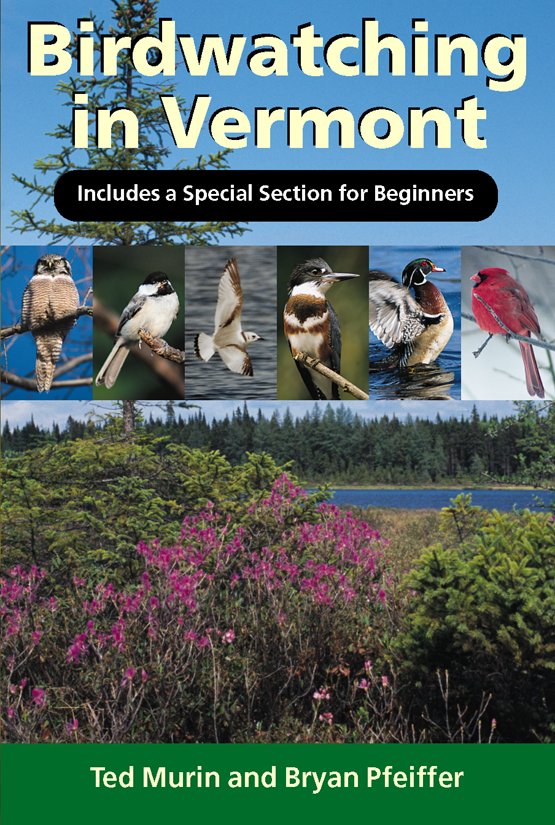Books and Chapters
 Birdwatching in Vermont
Birdwatching in Vermont
Designed to appeal to expert and backyard birdwatchers alike, this comprehensive guide reveals where, when, and how to watch and enjoy birds in Vermont. It not only offers the latest information about the seasonal status and distribution of birds in Vermont but also features a thorough introduction to the art and practice of birdwatching, including optics, ethics, migration, and conservation. Packed into its pages is expert advice on rare species, Christmas bird counts, the Vermont landscape, helpful resources for the birdwatcher, and more. Written for people just starting out or accomplished regional birders, this is the essential companion to traditional birdwatching field guides.
The heart of the book is the detailed descriptions and maps to more than 120 Vermont birdwatching areas, from the Champlain Lowlands to the summit of Mt. Mansfield. Drawing upon their extensive knowledge of the habits and habitats of Vermont birds, the authors have divided the state into ten regions, each with a rich diversity of birdwatching destinations. The guide also features informative accounts of the 296 bird species regularly seen in Vermont, including their preferred habitats and an innovative graph illustrating when each is most likely to be encountered. The authors, experienced naturalists and guides, have written the essential guide to discovering the joys of birding in Vermont. Published by the University Press of New England.
 A Century in the Mountains
A Century in the Mountains
By The Green Mountain Club
The Long Trail, Vermont’s 272-mile hiking path from Massachusetts to Canada, turned 100 in 2010. The birthday came with a great book, A Century in the Mountains: Celebrating Vermont’s Long Trail, published by the trail’s caretaker, the Green Mountain Club. Having hiked the Long Trail end-to-end twice, with countless shorter hikes in between, I wrote the chapter on the trail’s natural history. But the Long Trail is Vermont. So my chapter is in many respects a concise introduction to the nature of Vermont. In my chapter, the story begins about halfway on the Long Trail with a lowly mushroom at the summit of Mt. Grant. From there begins an explanation of the various natural communities on the Long Trail, including whatever flies, flutters, darts, jumps, scampers, walks, crawls, slithers, swims, grows, decays, or even only sits there beside this illustrious path. The story ends with a rare bird, the Bicknell’s Thrush.
 The Breeding Birds of Vermont
The Breeding Birds of Vermont
Edited by Dr. Rosalind Renfrew / Vermont Center for Ecostudies
The Second Atlas of Breeding Birds of Vermont, published in April 2013, is an encyclopedia of Vermont nesting bird species. This is not a field guide to Vermont birds. It is a powerful assessment of the state’s birds, a resource for any interested Vermonter – from scientists to backyard birdwatchers, from teachers to community planners. I authored the book’s section on the History of Avian Conservation in Vermont.
The Atlas features detailed accounts of 202 bird species: where they nest, when they nest, and analyses of population trends. Also included in the book are chapters on the Vermont landscape, bird conservation, and threats posed to Vermont birds. This second atlas analyzes changes in bird populations – some encouraging, some troubling – since the original Vermont atlas project established a baseline in the 1980s. The single volume displays the results in: 576 pages, 208 photos, 415 maps, 591 tables and 215 graphs. Published by the University Press of New England, the Atlas cover price is $75. VCE is donating copies of the Atlas to 150 Vermont libraries.
